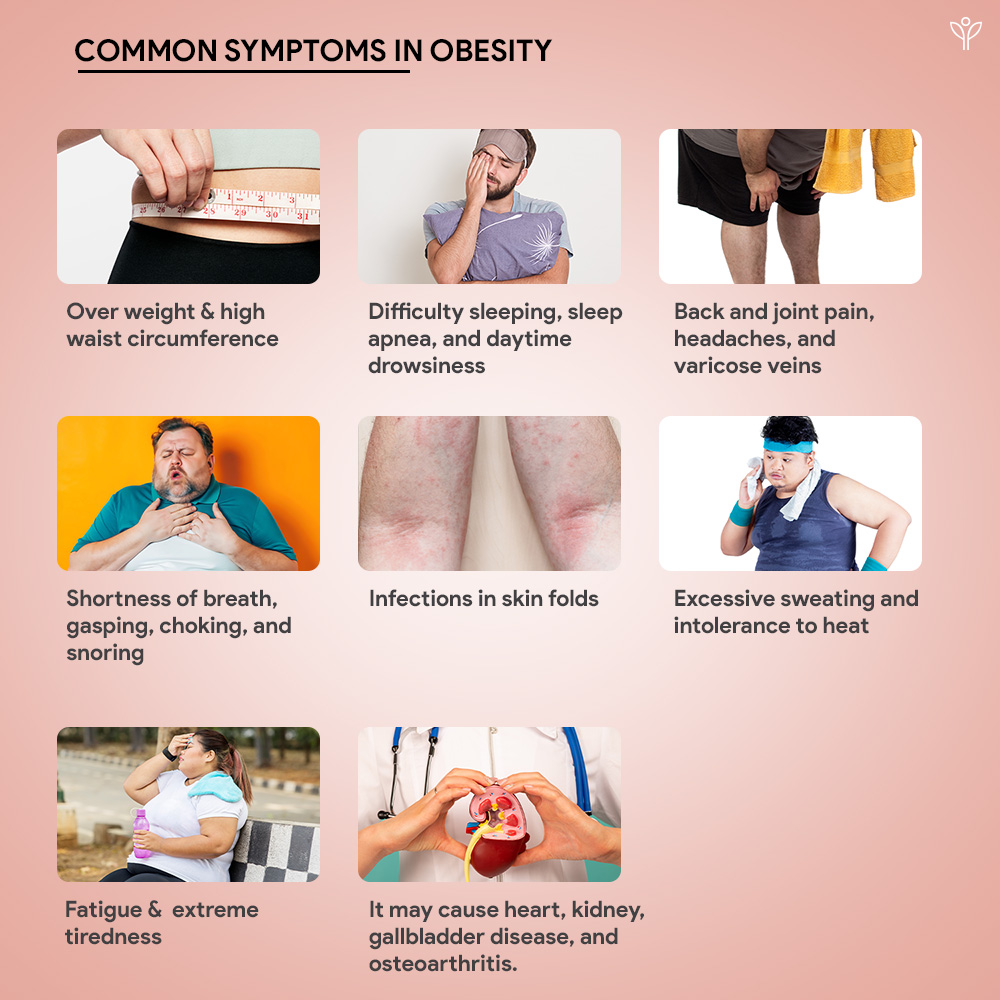




Obesity
AIC’s Obesity bundle is a comprehensive supplement regimen designed to support weight management and overall health. This bundle combines essential nutrients and digestive enzymes to boost energy, soothe gut, skin and systemic inflammation, and promote healthy digestion. With a focus on natural ingredients and holistic wellness, this bundle is perfect for those seeking a balanced approach to weight management. Experience the benefits of a healthy weight and improved overall well-being.
Transform Your Weight, Transform Your Life!
Understanding Obesity
Obesity is a condition defined by an abnormal accumulation of fat that can lead to adverse health effects (Bray, 2004). According to the WHO, 1 in 8 people in the world were obese in 2022. It was estimated that 40.3% of the Indian population was affected by obesity by 2020. (Venkatrao et al., 2020). This makes it a significant public health concern which needs to be addressed.
Obesity is a risk factor for cardiovascular disease, Type 2 Diabetes Mellitus, stroke, arthritis, certain types of cancer, and other chronic conditions (Bray, 2004; Herrera et al., 2011).

What we have in Obesity
Reference
Bray, G. A. (2004). Medical Consequences of Obesity [Review of Medical Consequences of Obesity]. The Journal of Clinical Endocrinology & Metabolism, 89(6), 2583. Oxford University Press.
Foss, B., & Dyrstad, S. M. (2011). Stress in obesity: Cause or consequence? In Medical Hypotheses (Vol. 77, Issue 1, p. 7). Elsevier BV. https://doi.org/10.1016/j.mehy.2011.03.011
Herrera, B., Keildson, S., & Lindgren, C. M. (2011). Genetics and epigenetics of obesity [Review of Genetics and epigenetics of obesity]. Maturitas, 69(1), 41. Elsevier BV. https://doi.org/10.1016/j.maturitas.2011.02.018
Lawrence, V., & Kopelman, P. (2004). Medical consequences of obesity [Review of Medical consequences of obesity]. Clinics in Dermatology, 22(4), 296. Elsevier BV. https://doi.org/10.1016/j.clindermatol.2004.01.012
Lyon, M. R., & Kacinik, V. (2012). Is There a Place for Dietary Fiber Supplements in Weight Management? In Current Obesity Reports (Vol. 1, Issue 2, p. 59). Springer Science+Business Media. https://doi.org/10.1007/s13679-012-0016-9
Mackey, R. H., McTigue, K. M., & Kuller, L. H. (2012). The Obesity Epidemic and Women’s Health. In Elsevier eBooks (p. 855). Elsevier BV. https://doi.org/10.1016/b978-0-12-384978-6.00056-x
Mozaffarian, D. (2017). Foods, obesity, and diabetes—are all calories created equal? In Nutrition Reviews (Vol. 75, p. 19). Oxford University Press. https://doi.org/10.1093/nutrit/nuw024
Sidik, S. M., & Rampal, L. R. G. (2009). The prevalence and factors associated with obesity among adult women in Selangor, Malaysia. In Asia Pacific Family Medicine (Vol. 8, Issue 1, p. 2). BioMed Central. https://doi.org/10.1186/1447-056x-8-2
Venkatrao, M., Nagarathna, R., Majumdar, V., Patil, S., Rathi, S., & Nagendra, H. R. (2020). Prevalence of Obesity in India and Its Neurological Implications: A Multifactor Analysis of a Nationwide Cross-Sectional Study. In Annals of Neurosciences (Vol. 27, p. 153). SAGE Publishing. https://doi.org/10.1177/0972753120987465
Watanabe, K., Wilmanski, T., Diener, C., Earls, J. C., Zimmer, A., Lincoln, B., Hadlock, J., Lovejoy, J. C., Gibbons, S. M., Magis, A. T., Hood, L., Price, N. D., & Rappaport, N. (2023). Multiomic signatures of body mass index identify heterogeneous health phenotypes and responses to a lifestyle intervention. In Nature Medicine (Vol. 29, Issue 4, p. 996). Nature Portfolio. https://doi.org/10.1038/s41591-023-02248-0






